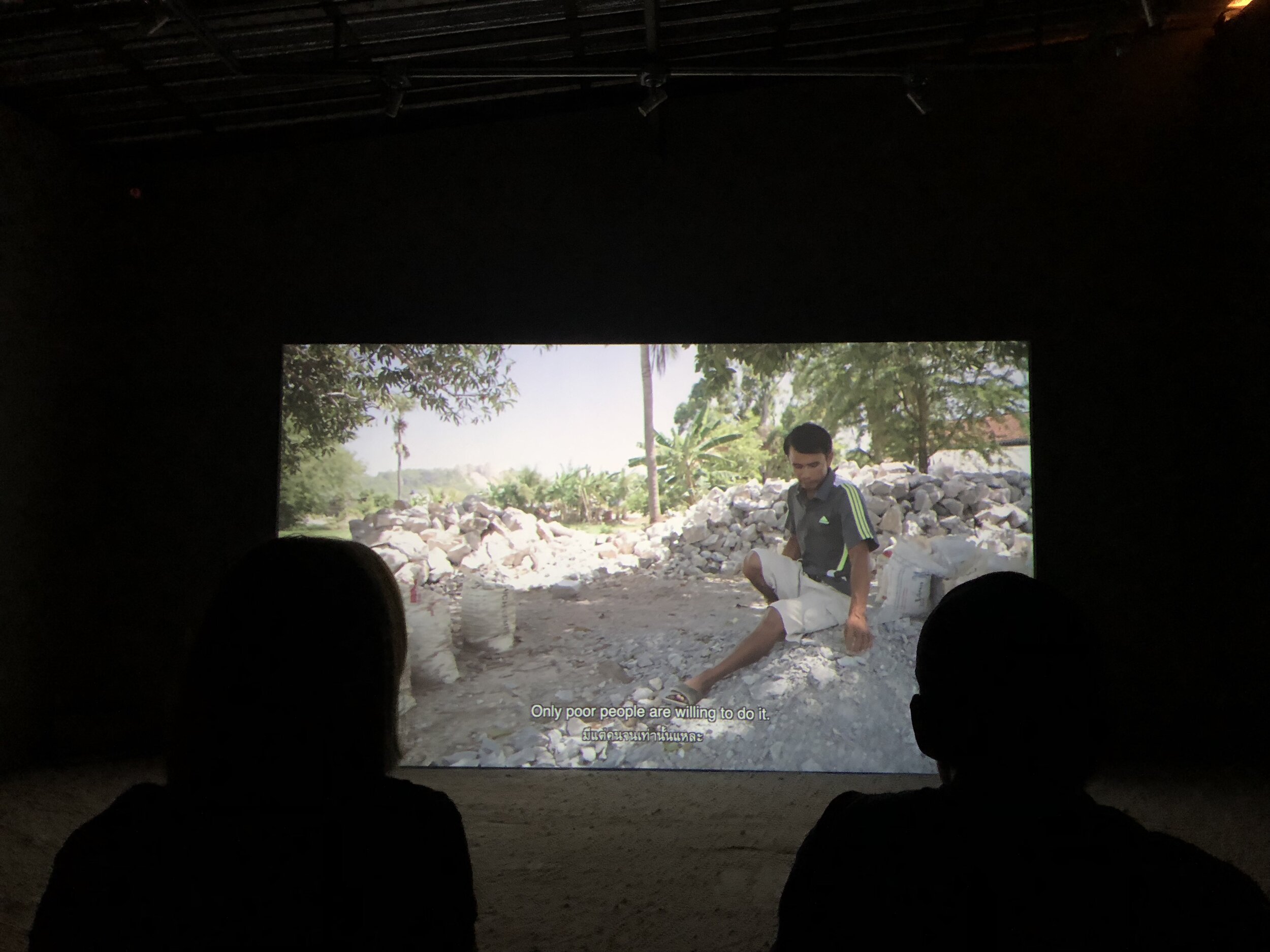
p a r t i c l e
by Piyarat Piyapongwiwat
28 Sep - 3 Nov 2019
Gallery Seescape, Chiang Mai
artist’s page
particle presents a new body of work by Piyarat Piyapongwiwat who investigates the roots of urbanised development and capitalisation of natural resources. Though the artist does not look at the causes, but rather at the very raw, natural substance from which mass construction in the cities heavily relies on: limestone. Known for its very resourceful, material property, limestone is commonly extracted from mountains and processed to form construction materials such as steel, plastic, and most importantly the highly demanded, lucrative cement.
This exhibition presents a big leap in the artist’s practice which has often been drawing on a documentary approach. Based on on-site research in Cambodia and Thailand, particle takes on a poetic, musical wander in documenting. In a video installation, which is the centerpiece of the exhibition, Piyarat allows us to traverse through a surreal world which humans create in the process of destroying. White dust under our feet, a mountain of crumbling rocks, a young man emerges. He drifts, he climbs, and he slips. A cord of violin strikes, moaning and yearning, he continues to stagger.
We are then displaced to meet and hear villagers working with the limestone. Their livelihood is at risk. Generations of their families have been heavily dependent on manually collecting and breaking the rocks from the mountains, as well as its inhabiting resources such as fruits and bat droppings. These soon are to be inaccessible as the mountains have been fenced up in the name of land concession for private companies. The environment in the village is eroding. The mountains are being bombed, pieced, and quarried, to meet the greed of modern, capitalistic societies.
The young man looks exhausted. Amidst the vast rocky landscape, he appears insignificant and almost floats aimlessly like a particle, soon too to be excavated like the stone. When he finally reaches the top, he sees a wide, green, lush mountain range. Is he going there? Or is it the quarry machinery that is going?
In a separate room, two additional works are displayed: a large piece of crumpled canvas made of cement bags hung from the ceiling, and three pieces of enlarged, reconstructed limestone. They appear solid and heavy yet fragile. They seem like artifacts, bearing witness to human’s action, creation, and destruction. They confront us as much as they allure us. The sculptural painting continues the artist’s previous practice in textile work. This time, however, the material itself appears decayed as if it might get crushed at a slight touch.
In this exhibition, Piyarat presents our world and our reality as if we are daydreaming. She allows us to imagine the world that we now live in: one that is decomposing into particles or a greenfield or else? The erosion of the earth is paired with the desperate young man seeking the “sun.”



